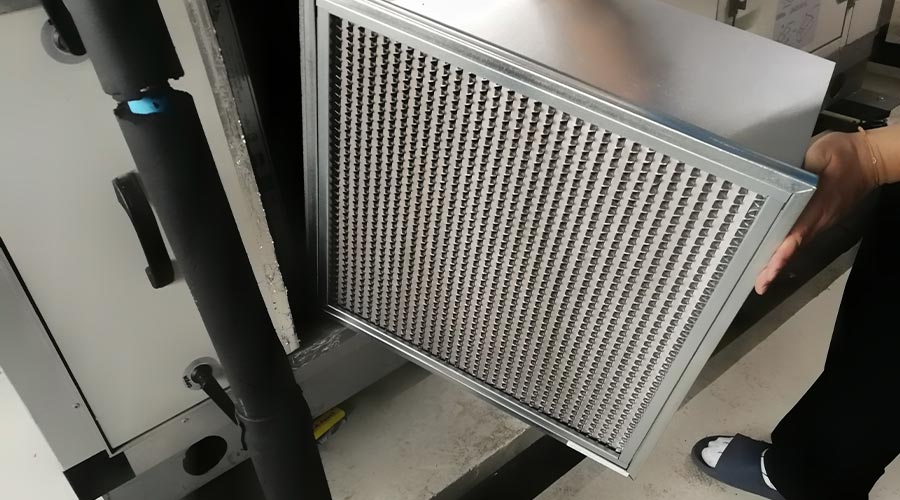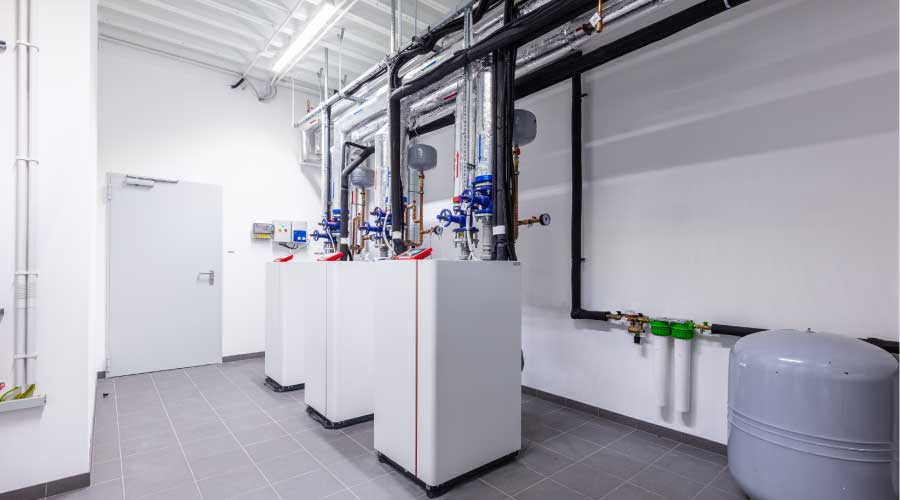Training Spotlight: HVAC Systems
Managers seeking to improve technicians’ inspection and troubleshooting skills must make tough decisions related to worker training
Maintenance and engineering managers know that worker training is critical in protecting organizations’ investment in facilities. And of all such investments, managers often rank HVAC systems as the most critical area of operation.
“The highest priority of training is always HVAC,” says Frank Merrins, CFM, director of plant operations at Brooking Park Nursing Center in Chesterfield, Mo. “Heating and cooling are the most sensitive areas in any facility. By involving every employee in the concepts and technology behind HVAC, they gain knowledge in electrical, plumbing and controls.”
To ensure workers receive proper training, whether it relates to HVAC systems or other equipment systems, managers must devote time to identify needs and training resources and overcome challenges, such as tight budgets and scheduling conflicts.
Setting Priorities
The need for training is driven by issues such as new technology and regulations, and worker and customer safety. Which skills managers chose to focus on depends on the organization’s present and future needs. Like many managers, Merrins says his training priorities constantly change to fit the needs of his department.
“When my transportation driver quit, I offered to pay for testing and training maintenance workers to obtain their commercial driver’s license and drive when needed,” Merrins says. “Three of the staff members stepped forward right away. So now, I have a driver anytime I need one.”
While managers can make the best efforts to budget for particular training, unexpected events might change the course of funding.
“Sometimes we forecast one need, only to find a more pressing need presents itself that requires funding,” says J.D. Thompson, director of maintenance at Hendrix College in Conway, Ark. His highest priority at the moment is training a new HVAC person on the facility’s energy management system controls.
“We get very little in the way of training on HVAC systems,” Thompson says. “We hire our people with experience, then they learn our particular systems as they go. We only have one HVAC person, and when the position has become vacant in the past, there was no cross-over time. We rely on contractors to get us through these times.”
Incorporating new technology is an inevitable change for which managers can prepare. As building equipment and systems become increasingly complex, so must the skills needed to operate new technology.
“I expect more training on CMMS in the future,” Thompson says. “Our system is currently unsupported and when it crashes, we will have no choice but to get a new system.”
Robert Pulliam, director of buildings and grounds for New Berlin (Wis.) Public Schools, says keeping staff technology skills polished requires never-ending training.
“I recently sent my maintenance supervisor and the head custodian of one of our district’s schools to Seattle, Washington, for training on our district’s current building management systems,” Pulliam says, adding that he plans to send two employees every year for technology-related training.
Selecting Sources
The array of training sources available today is bigger than ever before. In addition to traditional sources such as product suppliers, other department staff, and educational institutions, managers can find a variety of subjects covered through home-study and Web-based learning opportunities.
Managers must not only determine which skills their workers need. They also must decide on the method of training, where they receive it — in-house or off-site — and who provides it.
“As with all my training, I start with the basics and have employees do the hands-on, then give them more responsibility, encouraging them to take classes and read related material,” Merrins says.
“With regard to water treatment and plumbing, depending on the complexity, I may hire a company to get the system up to [specifications] and have my employees work along side their service technicians until my employees are confident in what they are doing,” Merrins says.
Managers also must consider how much time can be spent on training.
“If we have a class here, it’s no more than an hour and a half long to avoid losing people’s attention spans,” Pulliam says.
While hands-on training might be most appropriate for mechanical areas, some departments are experimenting with self-paced courses and Web-based training for polishing other skills, such as time management and leadership.
Jim Gibbs, director of maintenance management at Cornell University in Ithaca, N.Y., says his department is using the Internet a lot for training and has contracted with a company for online training.
“They have thousands of interactive training modules,” he says.
Monitoring Effectiveness
Although some CMMS include a module that tracks technicians’ training, some managers still opt to keep paper records, collect comments from training participants and observe workers’ skills after the training is completed.
“Our only monitoring mechanism is whether the person can do tasks he never did before or is willing to look at problems he’s never faced,” Thompson says. “If the training was not effective, the person is usually no more capable than before.”
Listening to comments from training recipients also provides an opportunity for managers to evaluate training effectiveness.
“We interview them when they come back,” Pulliam says. “If they’re really excited that they learned something, it’s usually a good indication that was a good school. If they tell us how good the donuts and coffee were, we don’t ever send them again.”
Finding Funds
While many organizations recognize the need for training, obtaining funds for this purpose is often the biggest challenge.
“Right now, there is a real bid for funds in the schools,” Pulliam says. “Usually, if I take money to have my crews trained, I’m taking money away from another area.”
From an administrator’s point of view, many other priorities are more important than training, Thompson says, adding that budget constraints also challenge training by restricting staff hirings. For example, his department’s current plumber will retire later this year. It will be difficult training a new plumber because he is unable to hire a plumber in advance.
“Years of undocumented changes, piping, and special tricks will have to be re-learned when he leaves,” he says.
A Stronger Chain
Cross-training might be one solution to help fill job position gaps and help technicians become more efficient and, hence, more valuable to the organization.
“If management doesn’t stay on the cutting edge of their education, their department will lag behind or fail,” Pulliam says. Managers need to provide equal and adequate training to all segments of their staff, including custodians, grounds care workers and maintenance crews.
“Well-informed employees are happy employees,” Pulliam says. “Providing training opportunities show that the department really takes their experience and knowledge into consideration.”
Related Topics:











